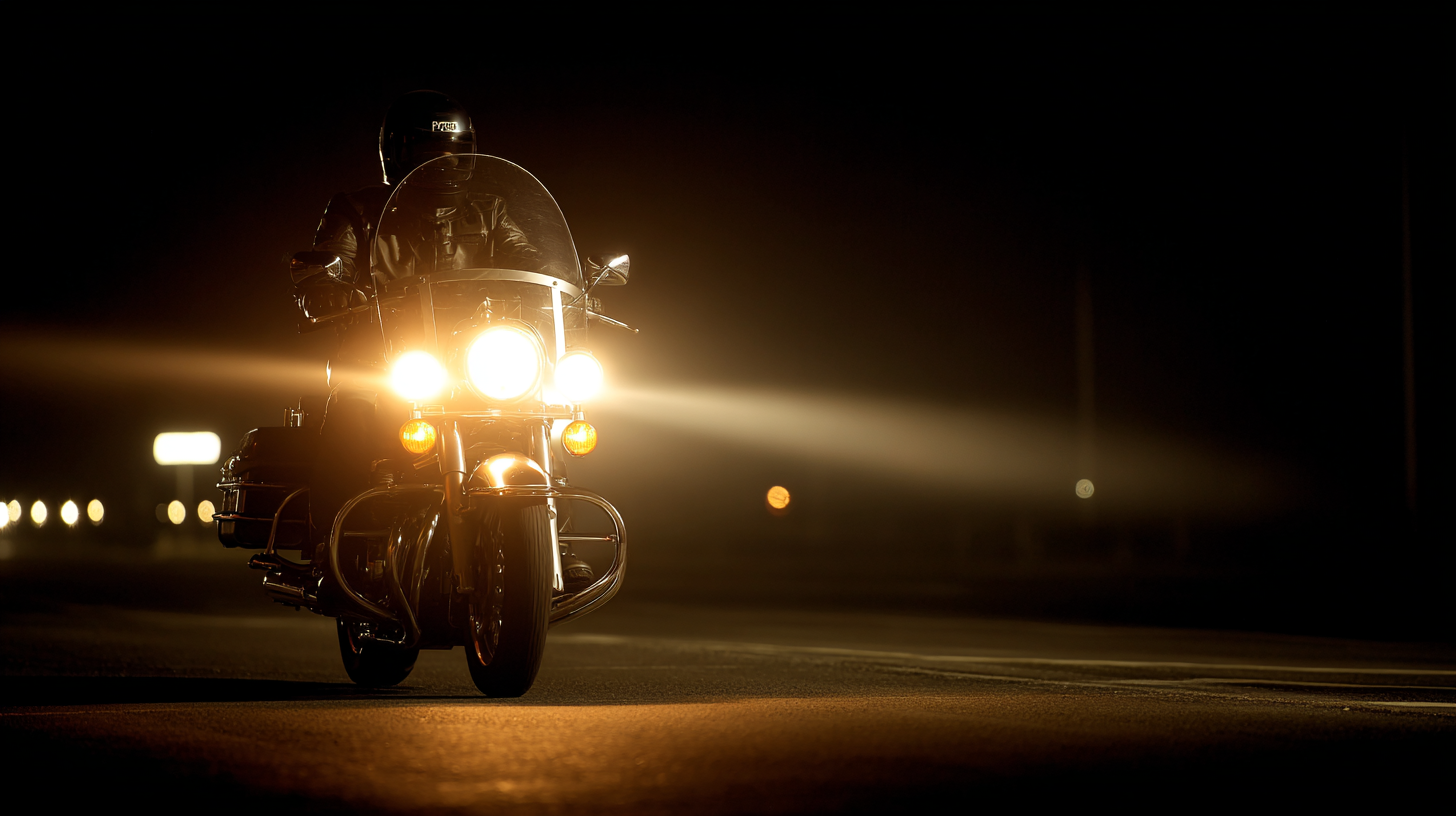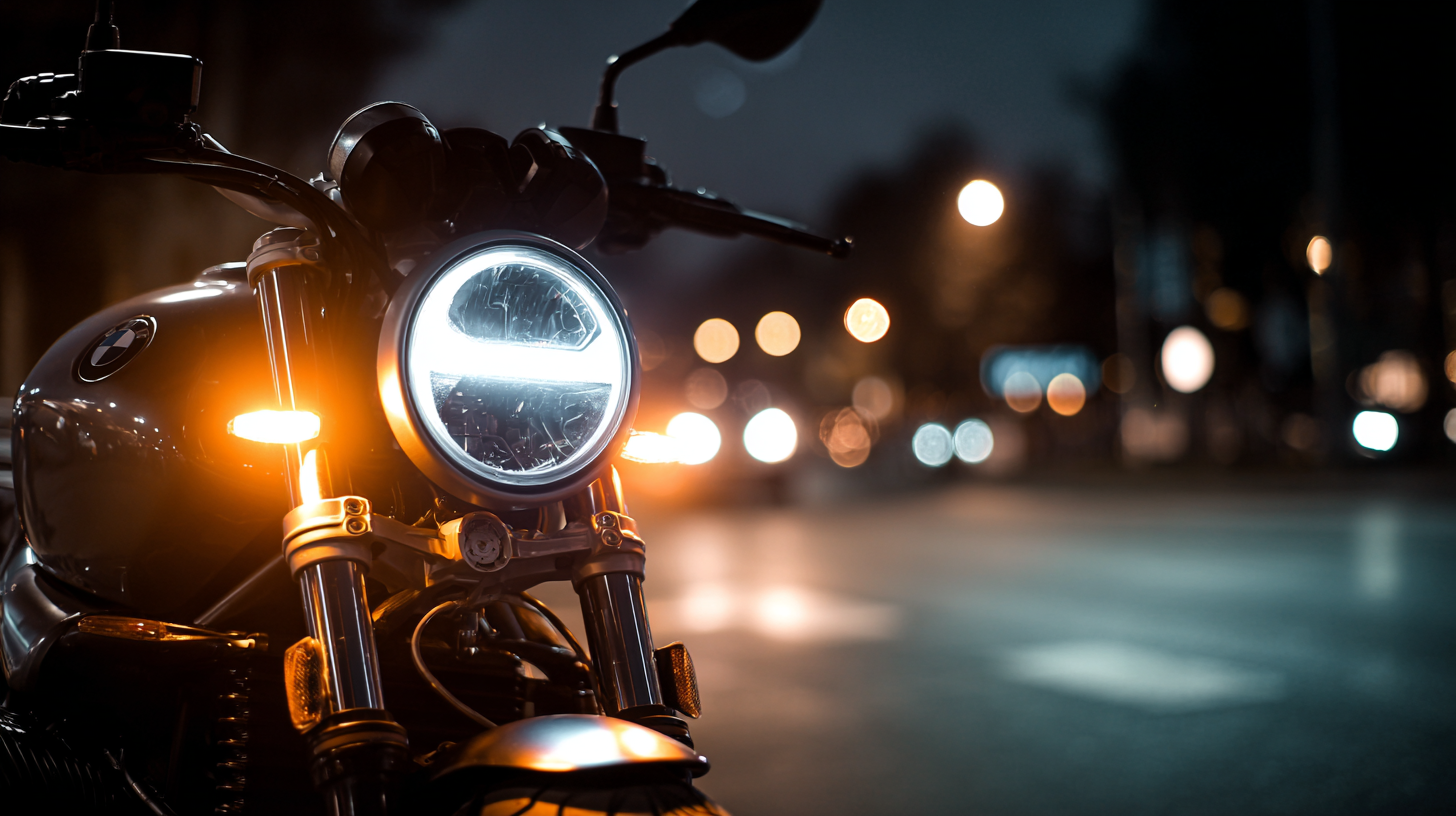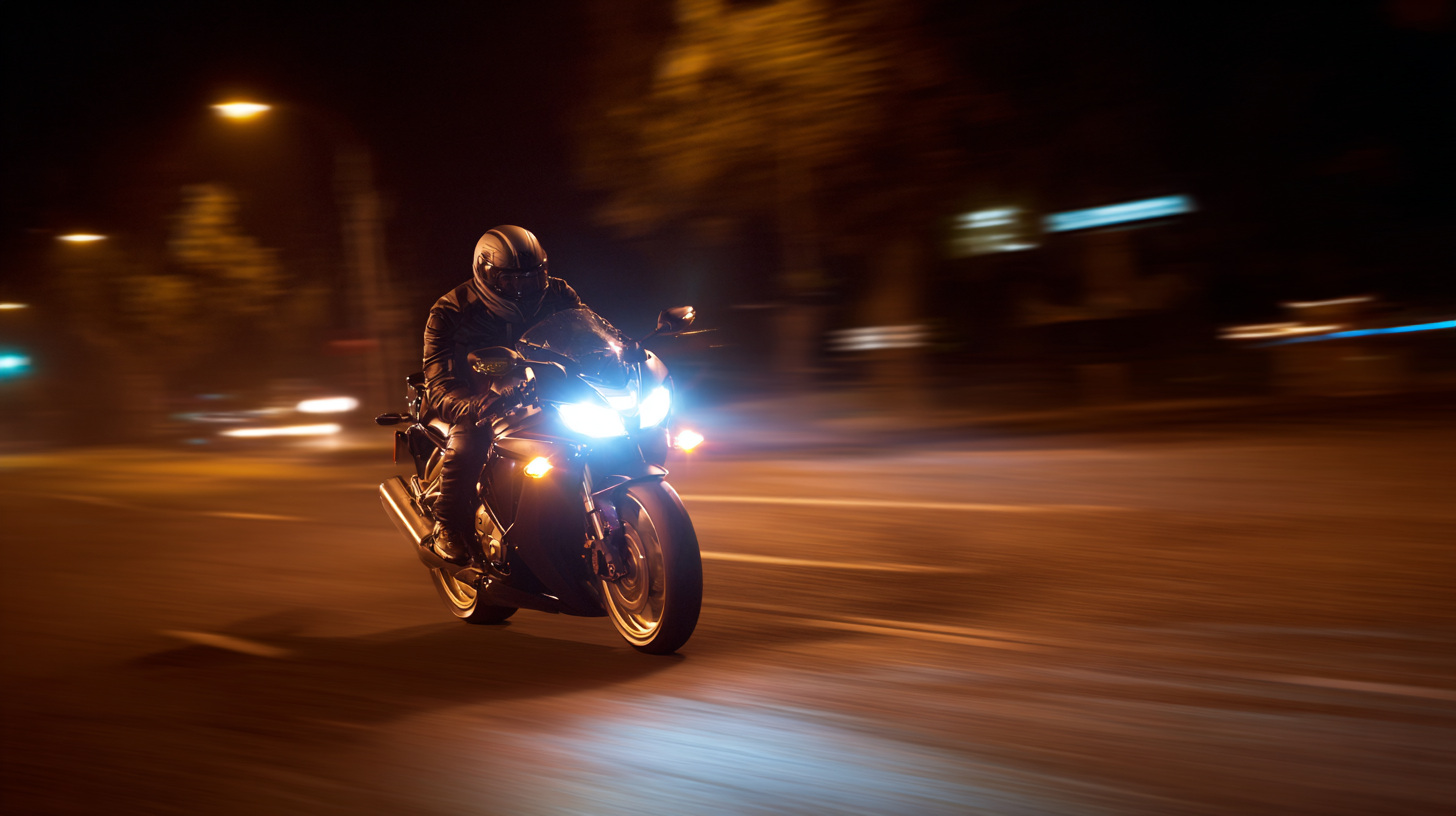Leave Your Message
As motorcycles become increasingly popular for both commuting and leisure, the importance of safety during night riding cannot be overstated. According to the National Highway Traffic Safety Administration (NHTSA), nearly 25% of motorcycle accidents occur at night, highlighting a critical need for enhanced visibility. One of the most effective solutions is the incorporation of advanced Motorcycle Lights, designed to illuminate the road and increase the bike's visibility to other traffic. A study by the Insurance Institute for Highway Safety (IIHS) indicates that motorcycles equipped with high-intensity LED lighting experience up to 30% fewer nighttime collisions. Furthermore, these modern lighting systems not only enhance the rider's ability to see and be seen but also significantly contribute to overall safety by reducing blind spots. As we delve into the transformative role of Motorcycle Lights, we will explore how they are revolutionizing night riding safety for motorcyclists worldwide.

Proper motorcycle lighting plays a crucial role in ensuring safety during night rides. As visibility decreases, the importance of adequate lighting becomes paramount for both the rider and other road users. High-quality headlights allow riders to see the road ahead clearly, identifying obstacles and potential hazards that may not be visible in the dark. Additionally, well-lit taillights can signal the presence and intentions of the motorcycle to drivers behind, significantly reducing the risk of rear-end collisions.
Beyond headlights and taillights, additional lighting accessories such as fog lights, LED strips, and reflective materials can enhance visibility even further. These elements not only illuminate the surroundings but also make the motorcycle more noticeable to others. A comprehensive lighting system contributes to a safer riding experience by ensuring that a rider is seen from all angles. Ultimately, embracing proper motorcycle lighting is essential for night safety, allowing riders to navigate the roads with greater confidence and reduced risk of accidents.
When it comes to enhancing night riding safety, understanding the various types of motorcycle lights is crucial. At the top of the list are headlights, which illuminate the road ahead and are essential for visibility. Modern motorcycles often use LED headlights, known for their brightness and efficiency compared to traditional halogen bulbs. These lights can significantly improve a rider's ability to see obstacles and navigate complex terrains during nighttime.
Another important category is auxiliary lights, which can supplement standard headlights. These include spotlights and fog lights, designed specifically to enhance visibility in adverse weather conditions and on dark roads. Spotlights cast a narrower beam, allowing riders to see farther ahead, while fog lights widen the field of view to help detect hazards close to the bike. Additionally, brake lights and turn signals play a pivotal role in communication with other road users, ensuring that riders are seen and understood by those around them. With the right combination of lights, motorcyclists can greatly improve their safety during night rides.

When it comes to night riding, choosing the right lighting options is crucial for enhancing visibility and safety on the road. One of the key factors to consider is the type of lights that best suit your motorcycle's design and your personal riding style. LED lights, for example, are increasingly popular due to their brightness and energy efficiency, making them an excellent choice for illuminating dark paths. Riders should evaluate the brightness level needed, ensuring that their lights not only meet local regulations but also provide enough lumens to see and be seen by others.
Additionally, it's important to consider the placement of your lights. Headlights should provide a wide field of vision, while auxiliary lights or fog lights can help cut through difficult weather conditions and increase visibility during rain or fog. Tail lights and turn signals should also be bright enough to alert other drivers of your presence and intentions. Investing in adjustable lights can make a significant difference, allowing riders to adapt their lighting for varying road conditions and personal preferences, ultimately transforming nighttime rides into safer experiences.
Proper installation and maintenance of motorcycle lights are crucial for enhancing night riding safety. According to a study by the National Highway Traffic Safety Administration (NHTSA), nearly 30% of motorcycle accidents occur at night, often attributed to inadequate visibility. Ensuring that lights are correctly positioned and functioning optimally can significantly reduce these risks. For optimal installation, riders should consider LED lights, as they provide brighter illumination than traditional halogen bulbs, increasing visibility to oncoming traffic.
Routine maintenance is equally important for ensuring long-lasting performance. Regularly checking the alignment of headlights and replacing any burnt-out bulbs can prevent dangerous nighttime mishaps. The Motorcycle Industry Council recommends inspecting the lighting system at least once a month. Furthermore, cleaning lenses and ensuring connections are free of corrosion can enhance light output and reduce the likelihood of failure during critical moments. By adhering to these practices, motorcyclists can better protect themselves and improve overall roadway safety.
When riding a motorcycle at night, visibility is paramount for safety. According to the National Highway Traffic Safety Administration (NHTSA), approximately 41% of all motorcycle crashes occur in low-light conditions. To mitigate risks, riders should enhance their visibility by employing best practices for motorcycle lights. High-intensity LED lights are recommended as they can be up to 300% brighter than standard bulbs, providing superior illumination of the road and ensuring that riders can see and be seen.

Additionally, positioning auxiliary lights effectively can significantly improve night riding safety. Research from the Motorcycle Safety Foundation highlights that riders using additional front-facing lights reduce the likelihood of being involved in accidents by up to 50%. Riders should also regularly check and maintain their lighting systems, as a study from the Insurance Institute for Highway Safety indicates that malfunctioning lights contribute to approximately 30% of nighttime motorcycle accidents. By maximizing visibility using proper lighting techniques, motorcyclists can enjoy safer rides after dark.






